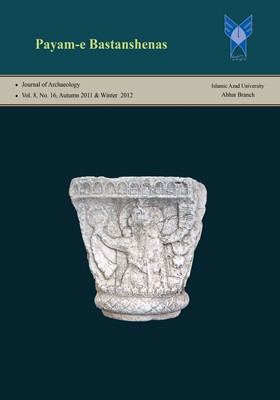A survey of Neolithic Sites at SarFirouz Abad Plain, West Central Zagros
Subject Areas : Prehistoric ArchaeologyKamalaldin Niknami 1 , Meysam Nikzad 2 , Sima Yadollahi 3
1 - Professor, Department of Archaeology, University of Tehran, Tehran, Iran.
2 - M. A. in Archaeology, Department of Archaeology, University of Tehran, Tehran, Iran.
3 - Assistant Professor, Department of Archaeology, University of Tehran, Tehran, Iran.
Keywords: Settlement Pattern, West Central Zagros, Sarfirouz Abad Plain, Neolithic Period, Pre-Pottery Neolithic, Pottery Neolithic,
Abstract :
The Sarfirouz Abad plain in Iran, which is located on the east side of Mahidasht and west of Central Zagros, has a great potential for the archaeological studies. Nevertheless, due to the lack of archaeological research here, it is now considered to remain archaeologically a less known area. Its geographical location and environmental potentials make it necessary to perform a systematic archaeological research process. Due to this requirement, the SF area was surveyed using an intensive field walking process by a team from Tehran University during a few months in 2009. This fieldwork provided data and for the first time added much useful information to expand our knowledge on the archaeology of the region in general and the Neolithic settlements in particular. From the findings gained through this study, 17 sites were found to have remains attributable to the Neolithic Period. Recent studies show that in SF, settlement began in the early Neolithic Period; three of these sites were identified in various parts of the area. Fifteen locations with settlement and pottery remains showed evidence of the middle and late Neolithic periods. An investigation of the settlement patterns of these Neolithic sites reveals a strong relationship to natural resources, particularly water and sources of flint. With the commencement of pottery in the area, significant changes occurred in the location patterns of the sites. The present study investigates the characteristics of potteries found from site surfaces and developed an interpretation of the Neolithic settlement patterns of the area.
_||_


